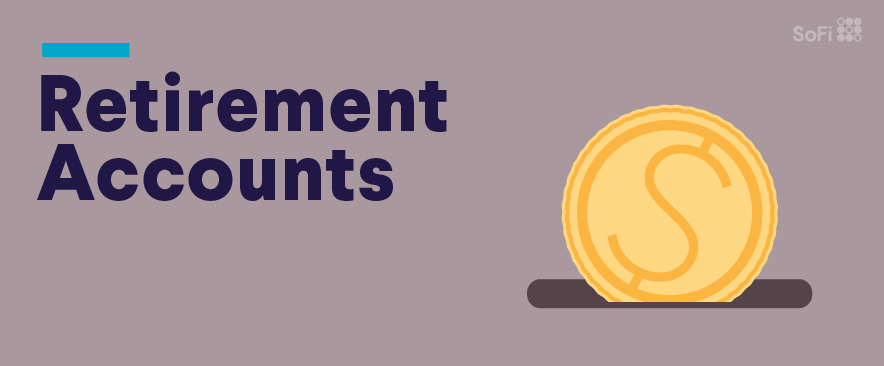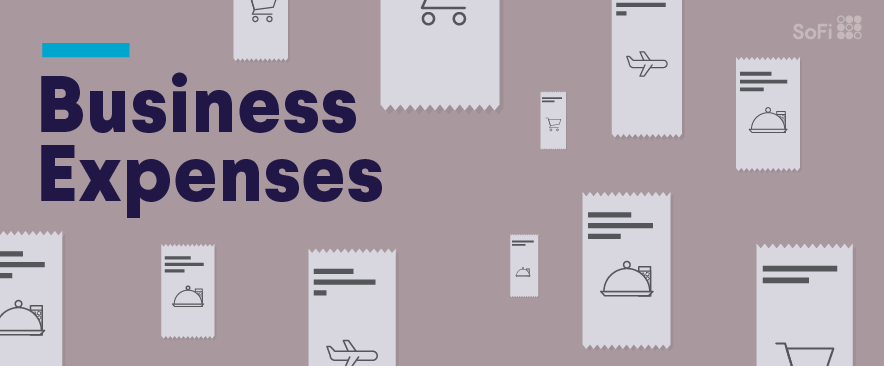Do You Have to Pay FAFSA Back?
If you’re wondering “do you have to pay back FAFSA®?”or “do you have to pay back financial aid?,” what you really want to know is whether you have to pay back the federal student loans you’re eligible for after filling out your Free Application for Federal Student Aid (FAFSA).
You will have to pay back those loans, but other types of student aid you get through FAFSA likely won’t need to be repaid. Aside from federal student loans, you can also use FAFSA to apply for grants and scholarships as well as work-study jobs, for which you’d get funds you usually don’t need to pay back.
If you have loans through FAFSA and need to pay them back, read on for information on the three general types of federal student loans and your repayment options for each.
Table of Contents
Direct Subsidized Loans
With Direct Subsidized Loans, the government (more specifically, the U.S. Department of Education) pays the interest while you’re still in school at least half-time. That’s what makes them “subsidized.”
The maximum amount you can borrow depends on whether you are a dependent or an independent student, as well as what year of school you are in. However, it is ultimately up to your school how much you are eligible to receive each academic year.
Not everybody qualifies for a subsidized loan. You have to be an undergraduate (not a graduate student) demonstrating financial need and attending a school that participates in the Direct Loan Program. Additionally, the academic program in which you’re enrolled must lead to a degree or certificate.
You also should check how your school defines the term “half-time” because the meaning can vary from school to school. Contact your student aid office to make sure your definition and your school’s match. The status is usually based on the number of hours and/or credits in which you are enrolled.
Direct Unsubsidized Loans
As you’re thinking about “do I have to pay back FAFSA?,” it’s good to know that you will have to pay back all the interest that accrues with Direct Unsubsidized Loans while you’re in school, because these loans are “unsubsidized.” That means the government doesn’t cover your interest while you’re in school like they do with a subsidized loan.
You don’t have to prove a financial need in order to qualify for a Direct Unsubsidized Loan. Additionally, these loans are available to graduate students as well as undergraduate students. Again, you need to be enrolled at least half-time in a school that will award a degree or certificate.
Direct PLUS Loans
There are two types of Direct PLUS Loans:
• Grad PLUS Loans: These are for graduate or professional degree students
• Parent PLUS Loans: Parent PLUS Loans can be taken out by parents for as long as their qualifying child is a dependent or undergraduate student
Unlike most other federal loans, PLUS loans require a credit check, and you cannot have an adverse credit history. If you or your parents have bad credit, a cosigner on the loan application may be an option.
With Direct PLUS Loans, you can borrow as much as you need for the cost of school attendance, subtracting the other financial aid you’re getting. However, the interest rate for PLUS loans is generally higher than it is for the other types of federal student loans.
Do I Get a Grace Period on My Federal Student Loan Repayment?
Whether you get a grace period — time after you graduate (or drop below half-time enrollment) during which you do not have to make loan payments — depends on what type of federal student loan you have. Not all federal student loans offer a grace period. Direct Subsidized and Unsubsidized Loans offer a grace period of six months, whereas Direct PLUS loans don’t offer a grace period at all.
Grace periods are meant to give you time to find a job and organize your finances before you have to start making loan payments. They are usually one-time deals; in most cases, you often can’t get a second grace period once the initial one ends.
Additionally, not all grace periods are exactly alike. Different loans may offer different grace periods. Policies vary. Check with your loan servicer so that you know for sure when your grace period begins and ends.
Keep in mind that grace periods are usually not interest-free. Some loans accrue interest during grace periods. Many students subscribe to the strategy of making interest payments even during the grace period. Doing this to put money toward student loans can ultimately lower the amount you owe, and interest payments are generally more affordable to handle than principal payments.
Also remember that loan servicers are paid by the Department of Education to handle billing and other services for federal loans. This is one of the basics of student loans. The government gives you a loan servicer; you don’t get to choose one yourself. The loan servicer you get is the one you should contact if you have questions regarding your loan.
Federal Student Loan Standard Repayment Plan
Once you graduate, your repayment plan will depend on various factors, but most of the time the government will place you on its Standard Repayment Plan. The general rule here is that you’re expected to pay off your loan over the course of a decade, and your payments will remain the same for the duration.
Before you are placed on that Standard Repayment Plan, the government gives you a chance to choose a few other repayment options (which we’ll discuss below). If you don’t choose one of those, you’ll automatically be placed on the Standard Repayment Plan.
Additional Repayment Options
Here are a couple of your other repayment options beyond the Standard Repayment Plan:
• The Extended Repayment Plan: The Extended Repayment Plan can extend your term from the standard 10 years to up to 25 years. To qualify, you must have at least $30,000 in outstanding Direct Loans. As a result, your monthly payments are reduced, but you could be paying way more interest.
• The Graduated Repayment Plan: Another option, the Graduated Repayment Plan lets you pay off your loan within 10 years, but instead of a fixed payment, your payments start low and increase over time. This may be a good option if your income is currently low but you expect it to increase over time.
Keep in mind that although you can choose these repayment options, you cannot refinance a federal student loan with the government on your own (you can, however, consolidate them). That’s because those interest rates are set by federal law, and they can’t be changed or renegotiated.
Difference Between Refinancing & Consolidating Student Loans
While you can’t refinance your federal loans with the government, you can do so with a private loan company. Before you consider refinancing, be sure to know the difference between refinancing and consolidating student loans:
• Refinancing means taking out a brand new loan so that you can pay off your existing loans. To refinance, you’ll choose the loan company you feel is best, with (hopefully) better interest rates and repayment terms. Refinancing student loans can be done via a private lender and can be used for both federal and private loans. Keep in mind that when you refinance federal loans with a private lender, you lose access to federal benefits and protections like loan forgiveness programs and repayment plans.
• Consolidation means placing all of your current loans into one big loan. Doing this typically extends your loan term so that your monthly payment is lowered. The problem with consolidating student loans is that it could mean you wind up paying additional interest. This is because when you consolidate multiple federal student loans, you’re given a new, fixed interest rate that’s the weighted average of the rates from the loans being consolidated.
Refinancing (as opposed to consolidating) your school loans may be a good option if you have high-interest, unsubsidized Direct Loans, Graduate PLUS loans, and/or private loans. One of the advantages of refinancing student loans with a longer term can reduce your monthly payments. Note: You may pay more interest over the life of the loan if you refinance with an extended term. Alternatively, you may be able to lower your interest rate or shorten your term.
Before you apply for that refinancing plan, it’s a good idea to check your credit score, as it is an important factor that lenders consider. Many lenders require a score of 650 or higher. If yours falls below that, you may consider a cosigner on the loan.
Lenders typically offer fixed and variable interest rates, as well as a variety of repayment terms (which is often based on your credit score and many other personal financial factors). The loan you choose should ultimately help you save money over the life of the loan or make your monthly payments more manageable.
The Takeaway
To answer the question, do you have to pay back FAFSA?, if you only got grants, scholarships, or work-study funding through FAFSA, you don’t have to worry about paying FAFSA back, so to speak. But if you got federal student loans through filling out FAFSA, you will have to pay those loans back.
Luckily, you have a number of options to do so. If you have high-interest loans, consider looking into student loan refinancing to see if you can reduce your monthly payments. SoFi offers loans with low fixed or variable rates, flexible terms, and no fees.
Check your rate for student loan refinancing in just two minutes with SoFi.
FAQ
If you fail a class, do you have to pay back your FAFSA financial aid?
In general, failing a class doesn’t mean you’ll have to pay back your FAFSA financial aid. However, if you don’t make Satisfactory Academic Progress (SAP), you could lose your future eligibility for financial aid. Your risk for losing eligibility for future financial aid might be greater if the class you failed is an important component of your major.
If you have leftover credits after financial aid is applied, do you have to pay it back at the end of the semester?
You won’t lose any money that may be left over (called a credit balance) after financial aid is applied to your tuition and other school expenses. The credit balance must be refunded to you within 14 days. That is, unless you direct the school to keep the credit balance and apply it to charges for the next semester.
We’ve Got You Covered
SoFi Student Loan Refinance
SoFi Student Loans are originated by SoFi Bank, N.A. Member FDIC. NMLS #696891. (www.nmlsconsumeraccess.org). SoFi Student Loan Refinance Loans are private loans and do not have the same repayment options that the federal loan program offers, or may become available, such as Public Service Loan Forgiveness, Income-Based Repayment, Income-Contingent Repayment, PAYE or SAVE. Additional terms and conditions apply. Lowest rates reserved for the most creditworthy borrowers. For additional product-specific legal and licensing information, see SoFi.com/legal.
Third-Party Brand Mentions: No brands, products, or companies mentioned are affiliated with SoFi, nor do they endorse or sponsor this article. Third-party trademarks referenced herein are property of their respective owners.
Financial Tips & Strategies: The tips provided on this website are of a general nature and do not take into account your specific objectives, financial situation, and needs. You should always consider their appropriateness given your own circumstances.
SoFi Loan Products
SoFi loans are originated by SoFi Bank, N.A., NMLS #696891 (Member FDIC). For additional product-specific legal and licensing information, see SoFi.com/legal. Equal Housing Lender.
SOSL0523003 Read more









